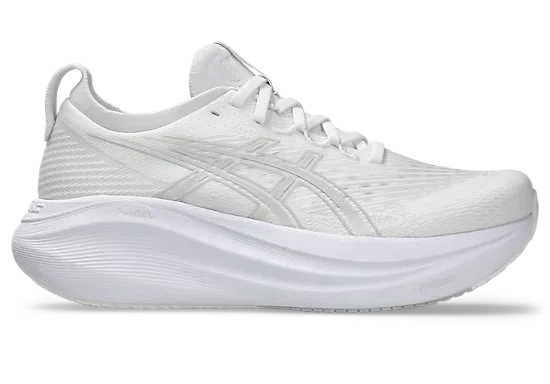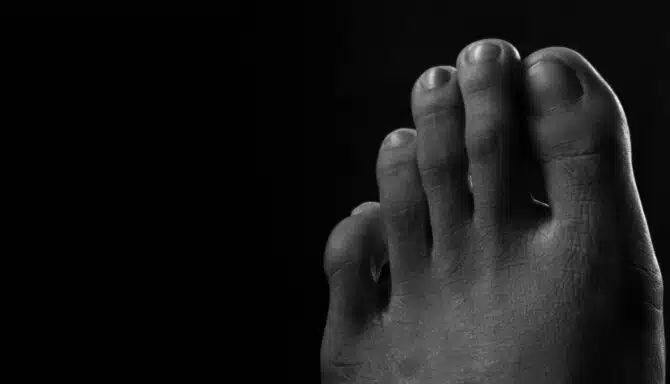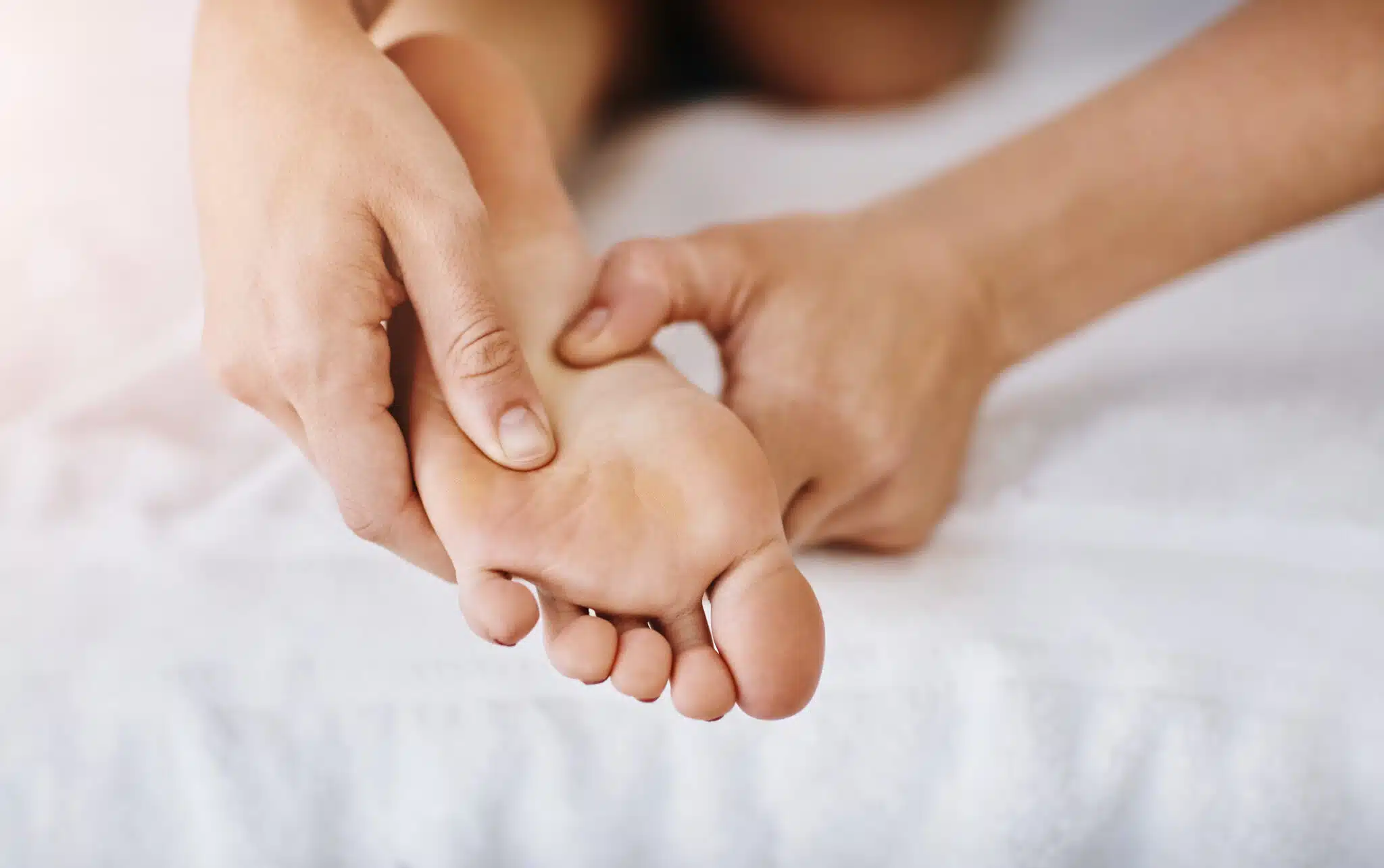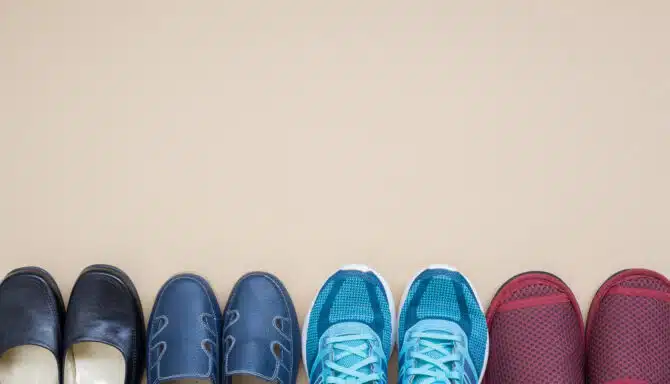April 30, 2025
Finding the best neutral running shoes is an important “step” for runners who want a natural, supported stride. Neutral running shoes are designed for those who don't require extra corrective features and benefit most from balanced cushioning and stability. Many people also look for lightweight running shoes that deliver comfort and speed without feeling bulky. In this guide, we’ll help you find the right pair! Many of these shoes, and others, are available at our Toronto foot clinic, Feet First Clinic, and foot specialists like chiropodists and podiatrists often suggest them for people with a normal gait or who supinate.
https://www.youtube.com/shorts/0bVBNNUAUOc
What are Neutral Running Shoes?
To understand what neutral shoes are, it helps to look at different foot types and the way each moves during walking or running. Foot types are typically defined by the height of the arch and associated gait patterns:
Flat feet: Minimal or no visible arch, often leading to overpronation, where the foot rolls excessively inward during movement. Around 40% of runners overpronate, and without the right shoes, overuse injuries like plantar fasciitis can develop. Runners with flat feet should consider stability shoes, sometimes the more restrictive motion control shoe.
High arches: A very pronounced arch, often leading to underpronation (also called supination), where the foot rolls outward.
Normal arch: A moderate, well-formed arch that’s about “halfway full.” It supports a relatively neutral walking or running gait without excessive rolling inward or outward.
Neutral shoes are designed for individuals with a normal arch and a natural gait, meaning their foot doesn't overly roll in (overpronate). Neutral running shoes are also suitable for people with high arches who underpronate. These shoes prioritize cushioning and shock absorption over structural support or corrective features, offering a more flexible and natural ride.
Unlike stability shoes or motion control shoes, which are more rigid, built to control motion and guide the foot into proper alignment, neutral shoes allow the foot to move more freely and comfortably, simply because this is okay for a normal arch and a normal gait doesn’t need guidance. The focus is on lightweight materials, responsive cushioning, and smooth transitions from heel to toe.
Comfortable neutral shoes are ideal for runners or walkers who have an efficient gait cycle and don’t require additional support to prevent injury. They can also be a good option for individuals with high arches, who often benefit from extra cushioning to protect against the increased impact that comes from less natural shock absorption.
How Do Neutral Shoes Prevent Foot Pain?
Neutral shoes help prevent foot pain by offering ample cushioning and promoting the foot’s natural motion without interference. For people with normal arches and a stable gait, or high arches, too much corrective structure can actually cause discomfort or alter natural biomechanics. Neutral shoes support a smooth stride while providing the soft, consistent underfoot feel needed to absorb the repeated impact of walking or running.
One of the key ways neutral shoes protect against foot pain is by reducing the jarring forces that travel up through the feet and legs with every step via shock absorption. High-quality cushioning materials, such as EVA foam or advanced proprietary foams, spread out impact forces and minimize stress on the heels, arches, and forefoot. This protection helps prevent common issues like plantar fasciitis (heel pain), metatarsalgia (pain in the ball of the foot), and even joint discomfort in the knees and hips.
Additionally, neutral shoes are often lighter and more flexible than stability or motion control shoes, which can reduce fatigue over longer distances. With less weight to lift and more natural foot mechanics, you can stay active longer and more comfortably. The result? A smoother, more enjoyable experience every time you move. And your feet aren’t too tired at the end of the day!
Top Neutral Running Shoes in 2025
Where do you start when you want to find the right pair? Luckily, we’re going to talk about some of the best options. Some of these are available at our Toronto foot clinic, Feet First Clinic, and come highly recommended by chiropodists and podiatrists. You can always call or visit us to determine what high quality footwear we have in stock at any given time.
ASICS Gel-Nimbus 27
The ASICS Gel-Nimbus 27 is a premium neutral running shoe designed for comfort and durability. It features a high stack height of 43.5 mm at the heel and 35.5 mm at the forefoot, providing ample cushioning for long-distance runs and everyday walking. The midsole utilizes ASICS' FF Blast Plus Eco foam, offering a soft yet responsive ride. A PureGel insert under the heel enhances shock absorption, which reduces joint strain. The engineered jacquard mesh upper is both breathable and supportive, contributing to the shoe's overall comfort. Despite its cushioning, the Gel-Nimbus 27 maintains a relatively lightweight profile, making it suitable for daily training.
This model is ideal for runners seeking a plush, cushioned experience during long runs or recovery days. But it's not just for runners! It's also ideal for people with foot pain, arthritis, or who want to keep their feet comfy and supported as they go about their daily activities. Its premium cushioning makes it feel like you're walking on a cloud. Whether you're training for a marathon or enjoying a leisurely jog, this shoe offers the support and comfort needed to keep you going. It's also fantastic for non-runners who just want a comfortable walking shoe.
Saucony Triumph 23
The Saucony Triumph 23 is another top-tier neutral running shoe with a stacked heel, known for its plush cushioning and smooth ride. It features PWRRUN+ foam in the midsole, delivering a soft yet responsive feel underfoot. The shoe's geometry promotes a natural stride, and the updated upper provides a secure, comfortable fit. Its durable outsole offers reliable traction, ensuring confidence on various terrains. Overall, the Triumph 23 combines cushioning, support, and durability, making it a versatile choice for runners and non-runners alike. The cushioning also delivers great shock absorption, while the mid-rocker sole reduces strain on the forefoot - great for people with high arches and joint rigidity.
This shoe is particularly well-suited for runners who prioritize comfort and support over speed. The Triumph 23's design caters to those who spend extended periods on their feet, whether during training sessions or daily activities. Its combination of cushioning and stability makes it a reliable choice for a wide range of runners.
Brooks Ghost
For those who don’t want a stacked heel, the Brooks Ghost is renowned for its balanced cushioning and reliable performance. This neutral running shoe offers a 12 mm heel-to-toe drop, catering to runners who prefer a traditional feel. Its DNA LOFT v3 midsole provides a smooth, responsive ride, while the engineered mesh upper ensures breathability and comfort. The durable rubber outsole enhances traction, making it suitable for various surfaces. The Ghost 16's consistent performance and comfort make it a go-to option for daily training and long-distance runs.
Ideal for runners seeking a dependable and straightforward shoe, the Ghost 16 delivers a comfortable experience without unnecessary frills. Its design focuses on providing a smooth transition from heel to toe, accommodating a variety of running styles. Whether you're a seasoned runner or just starting out, the Ghost 16 offers the support and comfort you need. It's also great for people who wear custom orthotics.
February 6, 2025
The HOKA trend is the rise in popularity of HOKA's high-stack running shoes, or running shoes with extra cushioning, extra height, a high heel stack and a rocker sole. They aren’t the first popular running shoes trend, and they certainly won’t be the last. Although people exclusively associate this type of trendy running footwear with HOKA, many other brands like ASICS and Saucony make footwear with the same high-stack shoe technology. Today, we’re diving into why these shoes offer more than just style—they come with real benefits. But they’re not for everyone, so we’ll also cover who should steer clear of this particular design.
https://www.youtube.com/shorts/ySn158c143c
What are High-Stack Running Shoes?
High-stack running shoes, often called “super cushioned” or even “chunky,” by those who don’t know the terminology. They have transformed modern footwear design for many high-quality brands. Often attributed to HOKA for “starting the craze," these shoes feature thick midsoles packed with advanced cushioning foam technologies that enhance energy return, provide sufficient shock absorption, and improve comfort over long distances.
Despite their benefits, high-stack shoes aren’t without controversy. Some runners prefer lower-profile shoes for better ground feel and stability, while others find high-stacks beneficial for injury prevention and endurance. Their chunky aesthetic has also sparked mixed opinions—some love the bold look and the added height without having to wear a true high heel while others see them as clunky.
High-Stack Shoe Technology
The defining feature of high-stack shoes is their thick midsole, which can measure over 40mm in some models. These midsoles use lightweight, resilient foams such as Pebax or EVA blends that provide exceptional cushioning while maintaining responsiveness. The goal is to reduce muscle fatigue by absorbing more impact, allowing runners to maintain performance with less strain on joints and soft tissues.
Another key factor in their performance is the rocker geometry, rocker bottom shoe or rocker sole—curved soles designed to promote a smooth heel-to-toe transition. This feature helps conserve energy, particularly during long runs, by reducing the work done by the calves and ankles.
ASICS Gel Nimbus 27
The Benefits of High Stack Shoes
High-stack running shoes offer several benefits for foot health, especially for individuals dealing with arthritis, diabetes, and metatarsalgia. Here's a breakdown of their advantages:
Enhanced Cushioning: High-stack running shoes feature extra cushioning, which absorbs shock and reduces impact on the feet during movement. This is particularly beneficial for people with conditions like arthritis, where joints are sensitive to pressure and movement.
Pressure Redistribution: The additional cushioning and rocker sole work together to redistribute pressure across the foot. In the case of diabetes or metatarsalgia, this can help alleviate excess pressure on specific areas of the foot, such as the forefoot or metatarsal heads. For those with diabetes, reducing pressure can help prevent the skin damage that leads to ulceration, as it lowers the risk of tissue damage and enhances comfort. (However, people with diabetes and balance issues may wish to avoid rocker soles - more on that later).
Joint Protection: The rocker sole limits the motion of foot joints. This helps manage conditions like osteoarthritis and hallux limitus (big toe arthritis). By restricting unnecessary movements, it prevents excessive strain on the joints, protecting them from further damage. This is especially useful for the big toe joint, where excessive motion can lead to increased pain and discomfort. It's also highly beneficial for people with high arches. People with high arches tend to experience joint rigidity (particularly hallux limitus) and lack of shock absorption. The rocker sole offsets the restricted mobility.
Improved Biomechanics: The curved design of the rocker sole encourages a smoother, more efficient gait. The shape propels the foot forward with each step, facilitating a natural walking motion and reducing strain on the joints. This is particularly beneficial for those with ankle, midfoot, or big toe arthritis, as it helps maintain normal walking patterns without overloading the affected areas.
Pain Reduction: Rocker soles are especially effective in reducing pain associated with conditions like hallux limitus and metatarsalgia. By minimizing motion at the big toe joint and redistributing pressure under the ball of the foot, these shoes can significantly reduce the discomfort felt during daily activities like walking or standing.
https://www.youtube.com/shorts/qByZ0GRFoaQ
When to Avoid High Stack Shoes
Here are some individuals who might want to avoid them or consult a foot care professional, like a Chiropodist or a Podiatrist, before wearing them:
People with Balance Issues
The rocker sole on high-stack shoes can make them less stable for individuals who struggle with balance or proprioception (awareness of body position). Those at a high risk of falls, such as elderly individuals or those with severe neuropathy, may find that the rocker sole from stacked heels throws off their balance.
People with Diabetes
Complications from diabetic neuropathy can lead to balance issues. Therefore, while the cushioning of a stacked heel is great for addressing joint issues, the "rolling" effect of the rocker sole is not suitable for people with diabetes.
Individuals with Ankle Instability
The increased midsole height and curved design can reduce ground feel and make it easier to roll an ankle, especially on uneven surfaces. People prone to ankle sprains or with a history of ankle instability might be better suited to lower-profile shoes with more lateral stability, or stability shoes with posting in the midsole (like the ASICS Gel-Kayano), which is constructed to cradle the foot and control ankle movement. In shoes like the ASICS Gel-Kayano, even though there is a stacked heel, the foot actually sits below the sole to provide stability.
https://www.youtube.com/shorts/osC-UmBtgNk
September 30, 2024
It's time to refresh your wardrobe with the latest fall footwear trends! While staying stylish is important, it's equally crucial to ensure your feet remain safe, comfortable, and healthy throughout the season. In this guide, we’ll explore the best shoe types and features that offer protection from the elements and minimize foot pain.
The Best Fall Shoe Styles
Just because safe fall shoes are practical, it doesn’t mean they can’t be fashionable. While shopping, look for designs that complement your wardrobe while still offering the comfort and protection you need. You also need to make sure your shoe always corresponds properly with your activity of choice. Also, consider specific needs: from seniors to children to construction workers, every foot is unique.
Fall shoe styles for this season include:
Foot-friendly fall ankle boots for everyday wear. These can be simple in style and include laces or easy slip-ons made mostly of leather with pull-tabs or pull-loops. But, there are also versions designed for fall adventures and challenges with extra shock absorption and waterproofing.
Speaking of shock absorption and waterproofing, this also applies to running shoes and athletic shoes for fall. Look for extra traction to prevent falls and foot injuries on slippery wet surfaces and on your favourite trail excursions. Our top picks are the Saucony Excursion GTX or the ASICS Gel-Sonoma. They're both hiking shoes with great grip and cushioning. They have a Gore-TEX upper, which is both waterproof and breathable.
The Saucony Excursion GTX
Heeled or platform boots that pair with your favourite dressy attire. Combat boot with an elevated sole, like the Clarks Torhill Rise, are on trend. These boots are out there, and waiting to be worn with your best duds!
Brand That Make Healthy Fall Footwear
Our downtown Toronto foot clinic carries only the best-of-the-best trendy and comfortable shoes. These may rotate sometimes, so be sure to stop by or call to ask what we have in stock. We often carry these brands that make first-rate fall footwear:
Saucony: A great source for waterproof hiking shoes to keep your feet dry in wet conditions.
ASICS: Another great option for waterproof hiking shoes. They also make waterproof running shoes.
Ara: Ara makes stylish cushioned dress shoes, waterproof ankle boots and winter boots for when the weather starts to turn.
Clarks: Clarks carries an array of fashionable boots.
Mephisto: Mephisto's All Rounder collection has a variety of ankle-hiking boots, like the Nigata-TEX and Satika-TEX. They also have some great waterproof walking shoes that are perfect for fall.
More Fall Footwear Essentials to Consider:
Shoes may steal the spotlight in fall footwear, but they’re not the whole show. Here are more fall must-haves:
Orthopedic slippers you can wear inside: These are great for people with musculoskeletal conditions like plantar fasciitis, Morton’s neuroma, metatarsalgia, and more, because they often have moulded foot beds and deep heel cups to provide arch support. One example is the Aetrex Mandy (below).
Custom orthotics or insoles to wear with your footwear:. Check that your fall shoes have removable footbeds to accommodate these.
Compression stockings to stimulate blood flow and keep your feet extra toasty.
Moisture-wicking socks to control foot odour and ward off fungal infections.
July 18, 2024
Feet come in all shapes and sizes, and while many people have heard of common foot conditions like bunions or flat feet, there's another lesser-known but equally interesting foot characteristic called Morton's foot or Morton's toe.
The condition occurs when the second toe is longer than the big toe, leading to potential biomechanical implications and foot-related issues. Let's delve into Morton's Foot, its potential effects on foot health, and how to manage it.
What is Morton's foot/toe?
Morton's Foot, also known as Morton's toe/foot or Greek foot, is a foot structure in which the second toe is longer than the big toe. The big toe is the longest in a typical foot, followed by the second toe. (Despite sharing the same name, Morton's neuroma and Morton's toe are not the same.)
However, in individuals with Morton's foot, the second toe extends beyond the big toe, sometimes significantly. The condition is quite common. As many as 40%+ individuals have a longer second toe than a big toe.
Potential biomechanical implications
But here's the twist: while Morton's foot is generally considered a variation of normal foot anatomy rather than a medical condition, it can have some surprising biomechanical implications that affect gait and foot function. Let's explore these potential issues associated with Morton's foot.
Added pressure on the second toe
The longer second toe may bear more weight during walking or standing, leading to increased pressure and potential discomfort or pain in the ball of the foot, which may contribute to clawing of the toe and hammertoes.
Gait changes
Morton's foot can alter the distribution of weight and pressure across the foot, potentially affecting gait mechanics and posture. This may contribute to overpronation, increasing the risk of injuries such as plantar fasciitis, shin splints and bunions.
Footwear challenges
Finding the right footwear can be a real challenge for individuals with Morton's foot. Shoes often fail to comfortably accommodate the longer second toe, leading to issues such as rubbing, irritation, or the development of thickened or ingrown toenails, corns or calluses on the affected toe.
How to manage Morton's foot
While Morton's Foot may not require medical intervention, there are steps individuals can take to manage associated discomfort or mitigate potential issues proactively:
Choose footwear wisely. Opt for shoes with a wide toe box to comfortably accommodate the longer second toe—Asics is a great choice for a roomier and wider toe box. Avoid narrow or pointed shoes that can squeeze or crowd the toes.
Consider orthotic support. Custom orthotic inserts or insoles can offset pressure on the toes and support the foot. This can alleviate any discomfort associated with Morton's Foot and improve your overall foot mechanics.
Foot-strengthening exercises. Engaging in exercises to strengthen the muscles of the foot and ankle can help improve stability and support, reducing the risk of overuse injuries or discomfort associated with Morton's foot.
Regular foot care. Practicing good foot hygiene and monitoring for signs of irritation or injury can help prevent complications such as corns, calluses, or ingrown toenails on the longer second toe.
March 4, 2024
Similar to practising exercises and stretches at home, learning how to perform your own foot massage and relaxation techniques can work wonders. Whether you’re looking to manage your own pain, or tending to a loved one, foot massages can provide comfort and stress relief.
Since foot massages are a major component of DIY foot care, we want to give you some handy tips on how to make the most of them. It is worthy to note that if you do have foot pain then see your foot health professional. This is especially so if long standing foot pain.
Let’s discuss how to massage each part of the foot, and highlight foot massage benefits you may not even be aware of!
Today's blog will explore:
Main benefits of a foot massage
Foot massage techniques
Additional benefits of a foot massage
Main Benefits of a Foot Massage
Foot massages can be empowering for those on a pain management journey. Regularly performing them before bed and when you wake up adds value to your treatment plan, and can make your daily life more comfortable! Here are the numerous benefits:
Targeted treatment of foot conditions
Relaxation and stress relief
Swelling (edema) management
Restless leg syndrome management
Reduces foot fatigue and boosts energy
Improves blood circulation
Foot Massages Techniques
A comprehensive foot massage should target as much of the foot as possible, but sometimes foot pain and conditions tend to affect certain areas and you want to focus on what you're struggling with.
Heel
Can help with plantar fasciitis, Achilles' tendonitis, etc.
Apply gentle pressure to the heel, using circular motions with your thumbs to loosen up the area.
Foot Arch / Bottom of the Foot
Can help with flat feet, high arches, metatarsalgia, etc.
While standing, place your arch on top of a therapeutic massage ball, and roll back and forth. This doubles as a useful foot exercise!
Use your knuckles to knead and massage the arch in a back-and-forth motion.
Apply firm yet comfortable pressure with your thumbs in small circular motions, addressing as much tension as possible.
Toes
Can help with arthritis, bunions, etc.
Apply a light, pinching motion to the base of each toe, working your way towards the tip.
Use your thumbs to press and release along the toe joints, addressing any tension.
Gently pull each toe away from the foot until you feel a subtle stretch.
Top of the Foot
Can help with extensor tendonitis, arthritis, stress fractures, etc.
Apply gentle pressure with your thumbs along the top of the foot, from the base of the toes to the ankle.
Use your knuckles or thumbs to knead the area in small circular motions, focusing on any tightness or tension.
Incorporate long, sweeping strokes with your palms, moving from the toes towards the ankle.
Additional Benefits of a Foot Massage
You may also find acupressure points in the feet and foot reflexology worth exploring.
Some studies suggest that “meridian points on the feet correspond with various organs in the body,” which is the concept behind foot reflexology. These organs include the kidneys, liver, small intestine, and many more. Essentially, applying gentle pressure to the appropriate acupressure points is believed to stimulate the flow of energy along the body's meridians.
In addition to pain management and stress relief, foot reflexology may also help with sleep, digestion, and eyesight. Your DIY massages may somewhat reflect what reflexology can achieve, but it’s important to discuss the concept with a healthcare professional if it interests you.
December 18, 2023
Compared to other purchases, shoes warrant a lot of thought and consideration. Wearing improper footwear is directly linked to foot pain and can turn into debilitating foot conditions. These conditions range from musculoskeletal pain (pain in the joints, muscles, ligaments and bones) to debilitating skin and nail issues. In other words, forcing your feet to operate in an inhospitable environment is a recipe for disaster!
Let’s take a look at how your bad shoes are causing you discomfort, and learn about some of the best solutions for foot pain and footwear-related health tips.
Image Credit: iStock
Why Does Improper Footwear Cause Foot Pain?
Research suggests that between 63 and 72% of people with foot pain wear shoes that are too small, too narrow and too cramped in the toe box. They also often lack the right amount of arch support, cushioning and protection from the ground’s impact. Studies also show that wearing poor shoes for decades can be a major reason why seniors experience foot pain today!
In a nutshell, inadequate footwear can ultimately disrupt the biomechanics of the feet, resulting in persistent pain and potential long-term damage.
Image Credit: iStock
Foot Conditions and Wearing Improper Footwear
From severe toenail pain, to dull aches, to nagging skin irritation, bad shoes can cause pain in more ways than one. Here are just a few issues you may be struggling with today:
Bunions and Hammertoes: Caused by narrow toe boxes and high heels.
Plantar fasciitis: Caused or contributed to by a lack of arch support.
Ingrown toenails: Can occur due to tight and narrow shoes that disrupt normal nail growth patterns.
Blisters: Due to a lack of cushioning and excessive rubbing against the skin.
Achilles Tendonitis: Contributed to by inadequate heel and arch support.
Diabetic foot: Ill-fitting shoes can lead to an increase in vulnerable pressure points, reduced blood circulation, and heightened risk of foot ulcers.
Please note that some conditions may be so advanced that they require medical shoes or orthopaedic shoes.
Image Credit: iStock
Revamping Footwear and Foot Health Tips
There are a few different ways to find comfortable footwear. First, you can try a shoe fitting service at Feet First Clinic. A staff member will guide you through available options and answer any questions you may have (staff members at regular shoe stores are often unable to answer these questions properly!).
Or, you can book a full footwear assessment and video gait analysis with a chiropodist. This gives you more insight into how you carry your weight and what parts of your feet need the most support.
If you choose to venture out on your own entirely, check out this checklist before you go shopping!
Lastly, you can double up on protection by investing in custom orthotics and wearing them with shoes that come with removable insoles.
Image Credit: iStock






